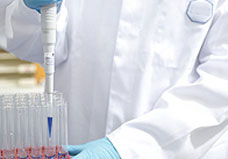| |
 |
|
|
|
|
|
|
Rabies |
|
|
What is Rabies
Rabies infections in people are rare in the United States.
However, worldwide about 50,000 people die from rabies each year,
mostly in developing countries where programs for vaccinating dogs
against rabies don't exist. But the good news is that problems can
be prevented if the exposed person receives treatment before
symptoms of the infection develop.
Rabies is a virus that in the U.S. is usually transmitted by a
bite from a wild infected animal, such as a bat, raccoon, skunk,
or fox. If a bite from a rabid animal goes untreated and an
infection develops, it is almost always fatal.
If you suspect that your child has been bitten by a rabid animal,
go to the emergency department immediately. Any animal bites —
even those that don't involve rabies — can lead to infections and
other medical problems. As a precaution, call your doctor any time
your child has been bitten.
Signs
and Symptoms
The first symptoms can appear from a few days to more than a year
after the bite occurs.
One of the most distinctive signs of a rabies infection is a
tingling or twitching sensation around the area of the animal
bite. It is often accompanied by a fever, headache, muscle aches,
loss of appetite, nausea, and fatigue.
As the infection progresses, someone infected with rabies may
develop any of these symptoms:
- irritability
- excessive movements or agitation
- confusion
- hallucinations
- aggressiveness
- bizarre or abnormal thoughts
- muscle spasms
- abnormal postures
- seizures (convulsions)
- weakness or paralysis (when a person cannot
move some part of the body)
- extreme sensitivity to bright lights, sounds,
or touch
- increased production of saliva or tears
- difficulty speaking
In the advanced stage of the
infection, as it spreads to other parts of the nervous system,
these symptoms may develop:
- double vision
- problems moving facial muscles
- abnormal movements of the diaphragm and
muscles that control breathing
- difficulty swallowing and increased
production of saliva, causing the "foaming at the mouth" usually
associated with a rabies infection
Treatment
At the hospital, it is likely that the doctor will first clean the
wound thoroughly and make sure that your child's tetanus
immunizations are current.
To keep any potential infection from spreading, the doctor may
decide to start treating your child right away with shots of human
rabies immune globulin to the wound site and vaccine shots in the
arm. This decision is usually based on the circumstances of the
bite (provoked or unprovoked), the type of animal (species, wild
or domestic), the animal's health history (vaccinated or not), and
the recommendations of local health authorities.
|
|
|
|
Rabies - treatment of Rabies, Rabies types,
Disease medicines, Rabies symptoms, Rabies and Disease symptoms, Rabies
symptoms Disease and diagnosis, Symptoms and Solutions, Signs and Symptoms,
type of Rabies, cause common, common Rabies, Rabies List, causes list,
Infectious Rabies, Causes, Diseases , Types, Prevention, Treatment and
Facts, Rabies information, Rabies: Definition, Rabies names, medical Rabies,
medical Rabies and disorders, cell Rabies, Rabies Worldwide, Rabies
Research, Rabies Control, Rabies Center, Digestive Rabies Week, Information
about Rabies, causes of different Rabies, Rabies Articles, Rabies and
conditions, Health and Rabies, Rabies Patients, Rabies and Sciences, causes
of alzheimer's Rabies, Rabies causes, alternative medicine heart Rabies,
body ailments, Rabies medicines, medical antiques, type of blood Rabies |
|
|





